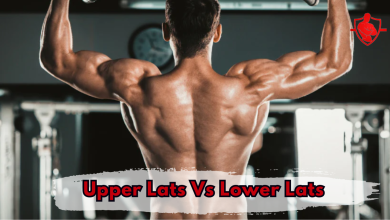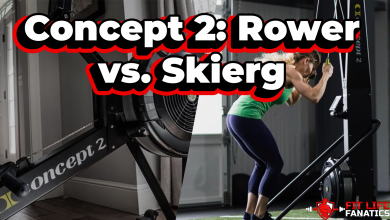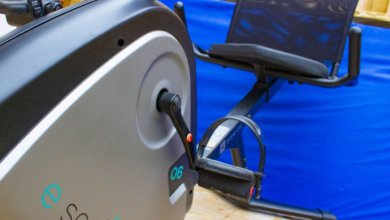How Many Squats Should I Do in A Day to Tone Thighs?
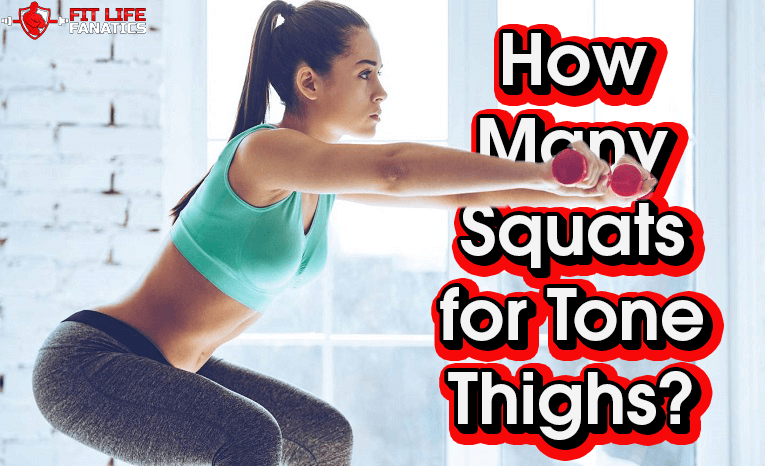
Squats are the bee's knees for everything good related to your lower body. From muscle hypertrophy to strength & endurance to muscle toning, they are a single solution to diverse fitness goals.
That said, how many squats should you do in a day for a specific goal? For the sake of this article, let's focus on toning thighs, which is a pretty common fitness goal.
What is the magic number if you are looking to tone your thighs using the squats as the primary exercise?
That's what we are going to find out today. I have experimented with a wide variety of squat-focused workout programs. Why, I have even tried some absurd challenges like '500 squats a day'.
So I have a fair idea of how many squats it takes for toned and muscular looking thighs, with zero cellulite on it.
Well, let's just dive straight into it.
How Many Squats Should I Do Per Day?
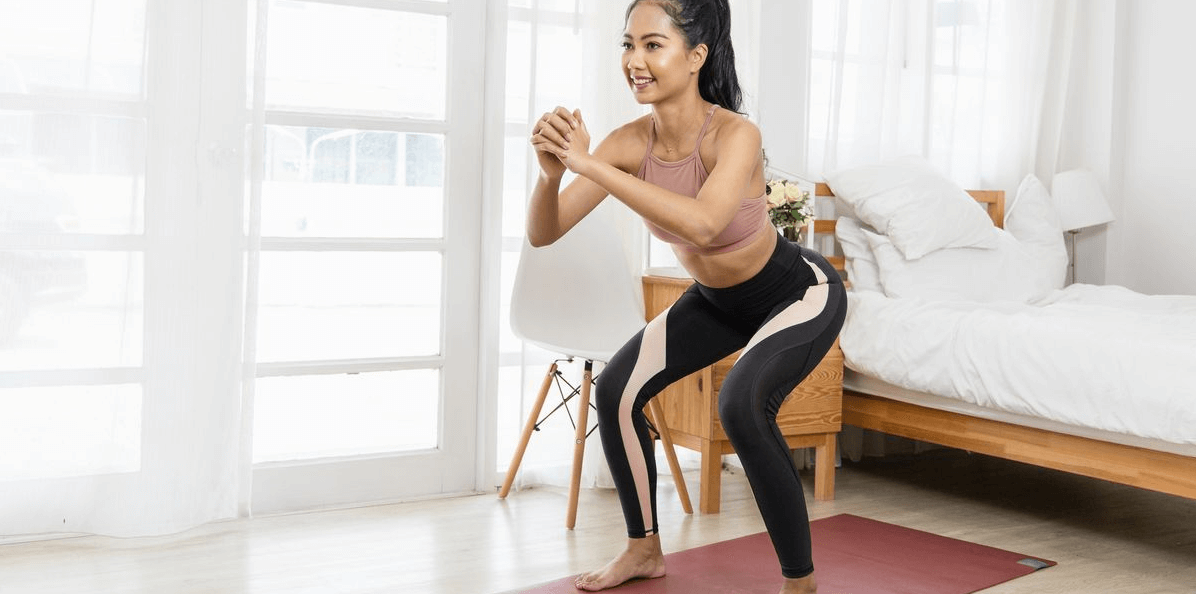
As much as you hate hearing this, it depends.
- What are your goals?
- How old are you?
- What's your experience with squats?
- Do you have access to a squat rack?
- Are you looking to do bodyweight squats or barbell squats?
- Do you have the form right?
- Is there a spotter who can help you with racking and unracking the bar, as well as with incorrect form?
These are just a few fundamental questions to ask yourself before you decide on a number of squats to perform a day.
But since each one of us seeks definitive answers, we will try to put a ballpark number for some of the common fitness goals.
Will doing squats everyday tone my thighs?
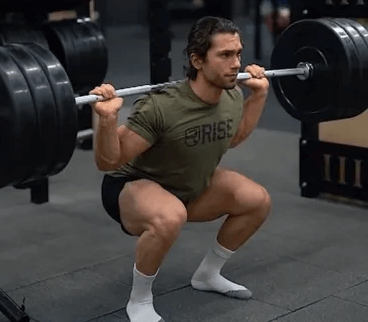
It absolutely will. Squats are a compound exercise that involve most of the big muscle groups of the legs. These are the quadriceps, the glutes, the hamstrings and the calves to a lesser extent.
Of these, both the quadriceps and hamstrings are muscles that contribute in influencing the shape of your thighs. The glutes too are part of a well-rounded package. (No Pun)
If you perform squats every day (or squatting every workout session), then you are engaging these muscles every day. There's no way that you will not see changes in the shape of your thighs!
On top of that, squats are one of the finest exercises to lose weight and burn fat. So even if you are looking to reduce thigh circumference, squats can be a great option for you.
Also, squats are compound exercises, which mean that they are natural fat burners.
They can help you peel away the layer of ugly fat that covers your hard-earned muscle. So it will definitely tone your thighs with consistent practice over a period of time.
How often should I do squats every week?
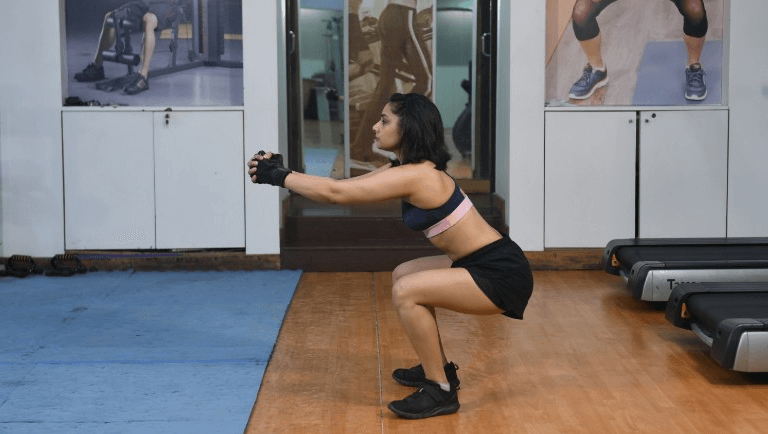
To tone legs, we recommend 20-25 squats a day, performed three to four times a week.
This obviously means bodyweight squats. It's even better if you can perform this as part of a HIIT circuit or some form of interval training.
The idea is to rev up your heart rate enough to trigger a metabolism boost. At the same time, you want to reap the muscle building benefits of the squat.
If you are looking to add resistance, and increase your stamina or endurance, then you drop that number by half. About 12-15 reps at moderate weight is more than sufficient for general toning.
Imp - When you are looking at a specific fitness goal, such as toning your legs, it's easy to go overboard with it, especially at the onset of your training program. However, it is crucial that you do not overdo squats. About thrice a week, is the max that we recommend for squats.
Anything more is definitely overkill and you risk overworking your thigh muscles without allowing it adequate time to rest.
How to Do Wide-Leg Squats to Tone Your Inner Thighs and Booty
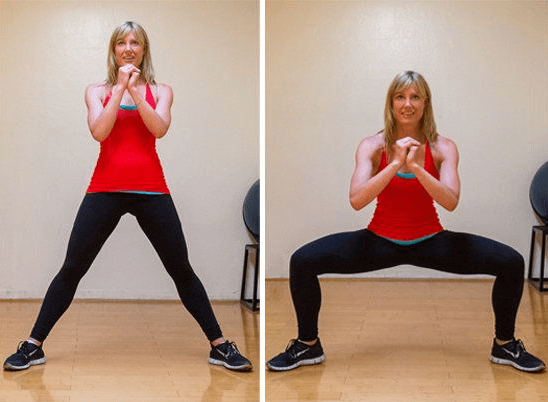
Wide Leg Squats are one of the most effective exercises for targeting the inner thighs and your glute muscles.
It differs from the conventional squat by recruiting the hip adductors to a large extent.
The inner thighs and the glutes are often neglected by many fitness enthusiasts, who focus more on developing their quads and hamstrings to get a high leg kick in an attractive V shape.
Maintaining that symmetry is crucial if you want lean legs that look toned from every angle.
Video - Wide Leg Squat Demonstration
The conventional squat is performed with your feet about shoulder-width apart. This places greater emphasis on the quadriceps and hamstrings.
But with the wide leg squat, you place your feet at least 2x the width of your hip. This brings the Gluteus Maximus and the adductor Magnus into focus.
The video above shows how to perform the wide leg squat correctly.
Step by step instructions
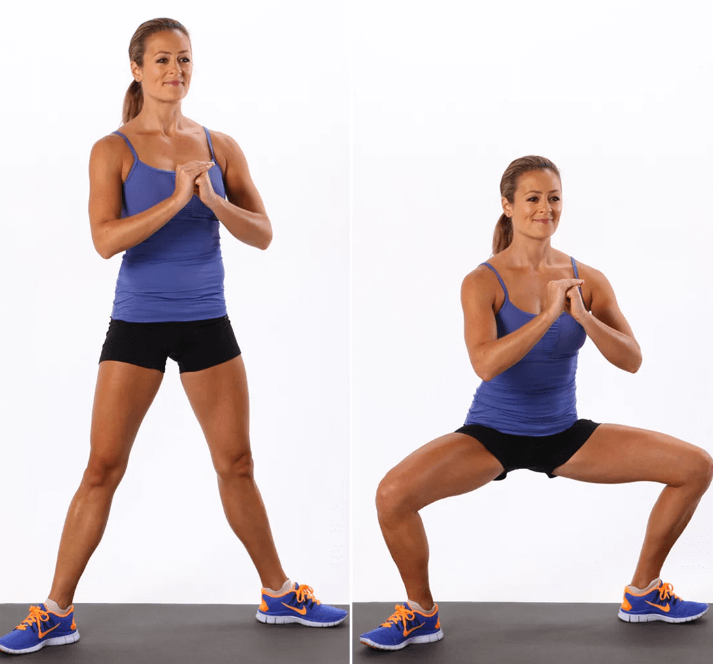
Step 1 - Place your feet about 1.5x to 2x the width of your hip with toes facing slightly outward.
Step 2 - Inhale and lower yourself down keeping the weight on your heels while you push your hips back. Keep the chest tall and core engaged through this entire movement.
Step 3 - As you bend at the knees, begin to shift forward bringing your weight over the middle of the foot. Your knees should be moving inward as you do so.
Step 4 - Lower yourself down to a cross legged position and exhale as you come back up. Keep your weight on the heels and chest tall throughout the movement.
If it's your first time doing these, then go slow to avoid injury or any discomfort in the hips or knees. The wide leg squat is slightly more difficult than the conventional squat, so you may need to start with a lighter weight before progressing with it.
Correct Squat Form: How to do squats the right way to tone thighs?
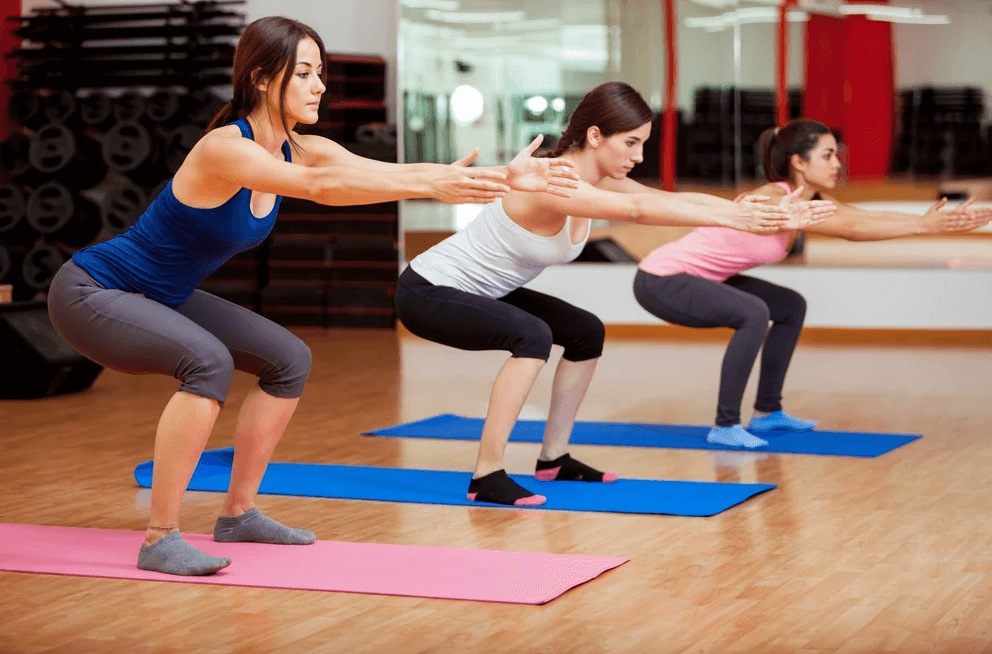
Form is the most important aspect of any exercise. But it’s even more important to learn correct form while squatting.
Bad form while squatting leads to unpleasant things that you can do without.
Sometimes, the damage can be so severe that it can take forever to repair. That's why we have created this form checklist for you.
The Core

Squats are a lower body exercise. But the bulk of it depends on a strong and stable core.
The core is your body's support system that consists of some of the most important muscles from a functional perspective. These are muscles that help your back stay straight, as well as assist with a variety of movements that you perform everyday.
A squat is one of the best exercises to strengthen and develop the erector spinae, which are the muscles that run parallel to your spine, protecting it from stress, hyperextension and impact.
Tip - Brace your core throughout the exercise and stay as upright as possible. Ensure that you don't hold your breath. Breathing with a braced core is important for more than one reason.
Other exercises you can do to target the core more include, Romanian chair sit-ups, double crunches, cable crunches, and standing oblique crunches.
The Back
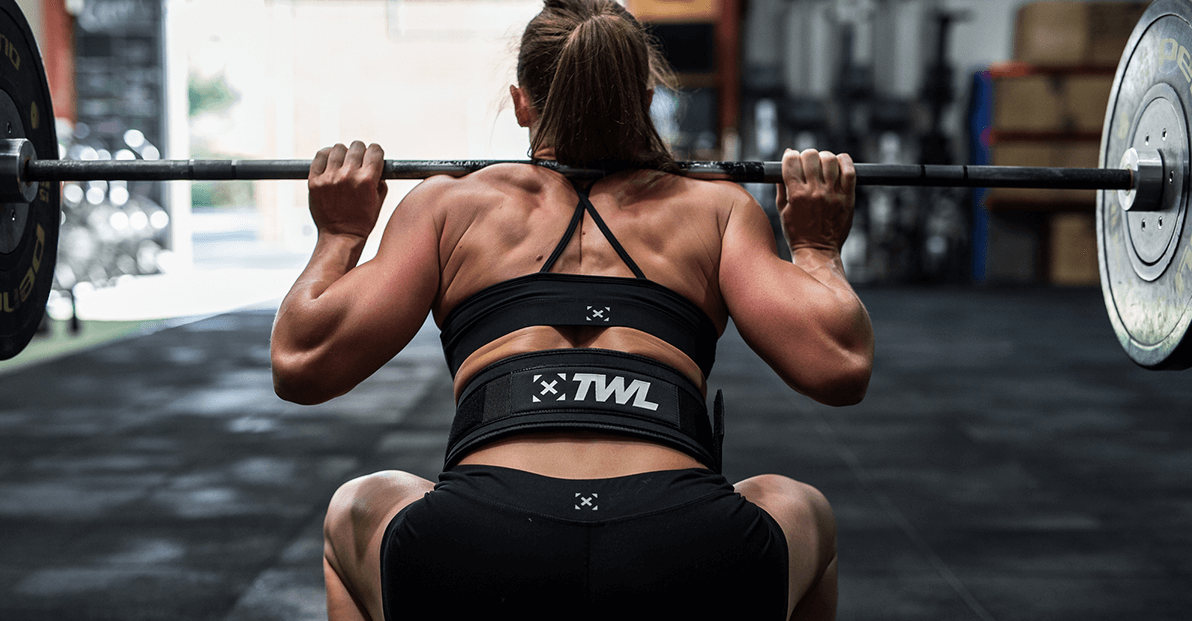
Your back is the second most important muscle group that plays a vital role in the squat. Time and again, you'll hear your coach scream, 'Straight back and Neutral spine'.
Part of this is dependent on the core. But what happens when your core fails to do its job?
To compensate, many people tend to lean forward while going down. This is one of the commonest mistakes, but a dangerous one, as it will strain your back and lead to injury.
Here's a quick test you can perform to gauge your back strength before attempting the squat.
Just stand with your hands either side of the body with fingers pointing away from the spine. Then bend at your hips and knees while maintaining a straight upper torso.
If you lean forward, you have a weak core and/or back muscle.
The Knees
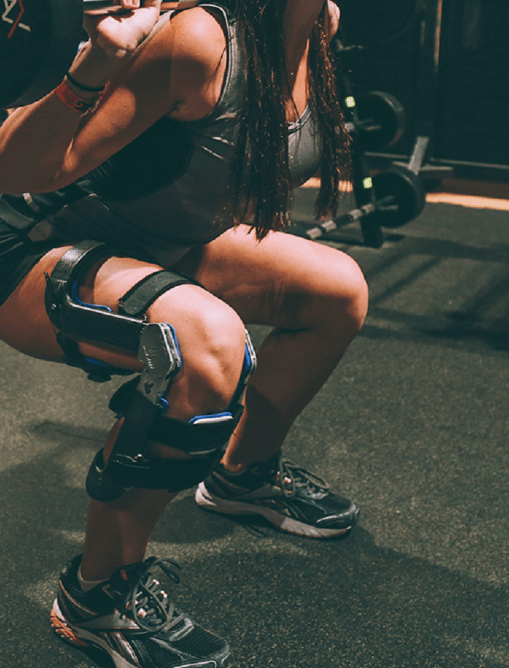
Knees are one of the most used joints of the body that routinely bears a lot of stress from different activities that we undertake every day.
When you're doing squats, there's a high chance that your knees will take up most of the weight since they're the closest to the floor.
This is where good form comes into play.
The right Squat form and technique ensure that your knee doesn't come over your toes as this puts pressure on them and can lead to injury. Make sure you keep it behind your big toe. If you can't, it's time to stretch your calves and ankles to improve flexibility.
If you have existing knee injuries like the patellofemoral syndrome, then it may be in your best interest to avoid performing the squat.
Opt for R.I.C.E., which stands for rest, ice, compression, and elevation.
The Hips
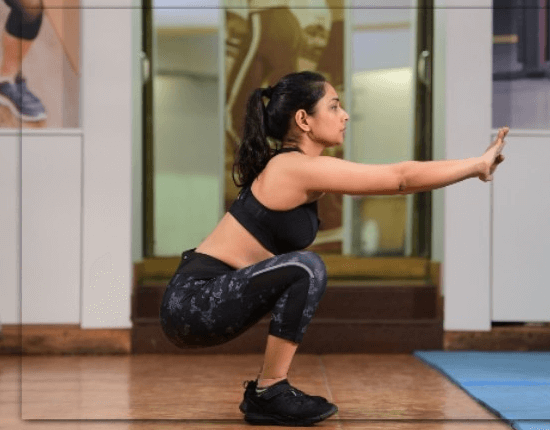
Good squatting form begins at the hips. From pushing back the hips to hinging correctly, the role of the hips varies with each type of squat.
A proper hip hinge is required when you're performing the Olympic lifts to protect the lower back.
It's crucial for other types of squats, too - just that they differ slightly in terms of hand placement and grip width.
A common mistake is to push the hips forward instead of pushing it back. Your goal should be to push the hip backwards and hinge with a straight back.
The Feet
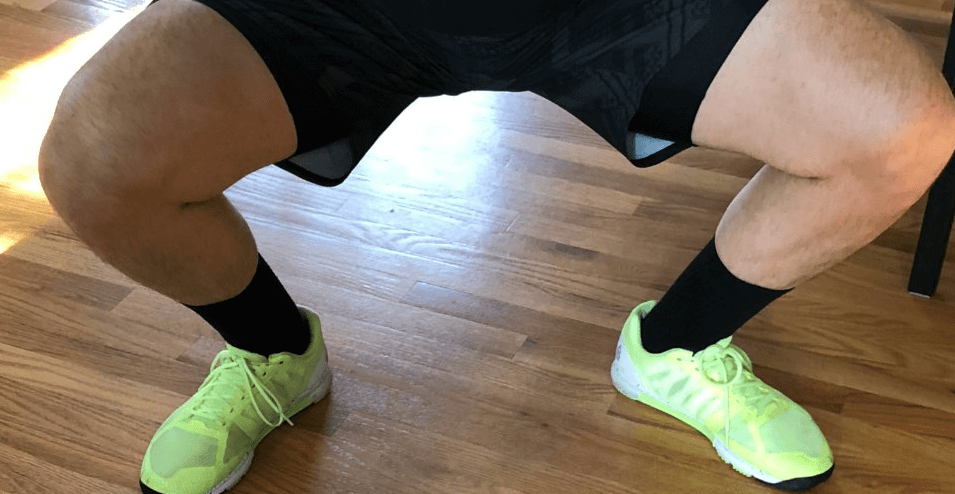
When you're squatting, the feet will drive into the ground stabilizing your entire body. It's important to have a stable base when attempting to lift weight over your head or pushing yourself down into the ground.
Keep the feet firm on the ground throughout the move. If they start to get wobbly, then you risk going off balance.
Try to shift the weight back into the heels as you lower your glutes.
This fires the quads and allows you to drive upwards in a single movement.
The Thighs & Calves

The Thighs or quads are a prime mover in the squat and work by providing the much needed support to hip flexors and glute muscles.
To ensure that the thighs are working efficiently, keep them tight throughout even as you're going down into the squat.
You can do this by squeezing your glutes during the entire range of motion. The thighs should be parallel to the ground in the final position.
If you have issues with cramping in the front of your thighs, then try using a wider stance to shift the weight backwards. The calves should be at 90-degrees, like you are seated on a chair.
If you want to work your claves more you can do other exercises like the seated calf raise alongside doing squats.
The Chest
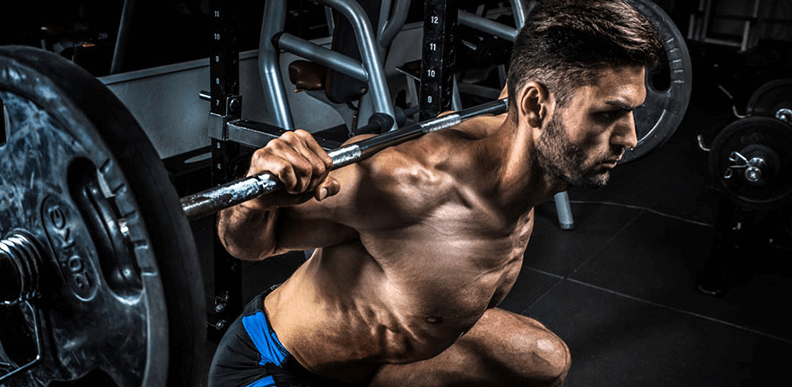
Most people are surprised when we mention the chest as one of the important muscles for clean squat form.
However, the chest is critical in keeping the body upright and stable.
To maintain a good chest position while squatting, drive your shoulder blades and elbows downwards and back. This keeps you from leaning forward at the neck. Remember - do not shrug your shoulders.
How low do I squat?
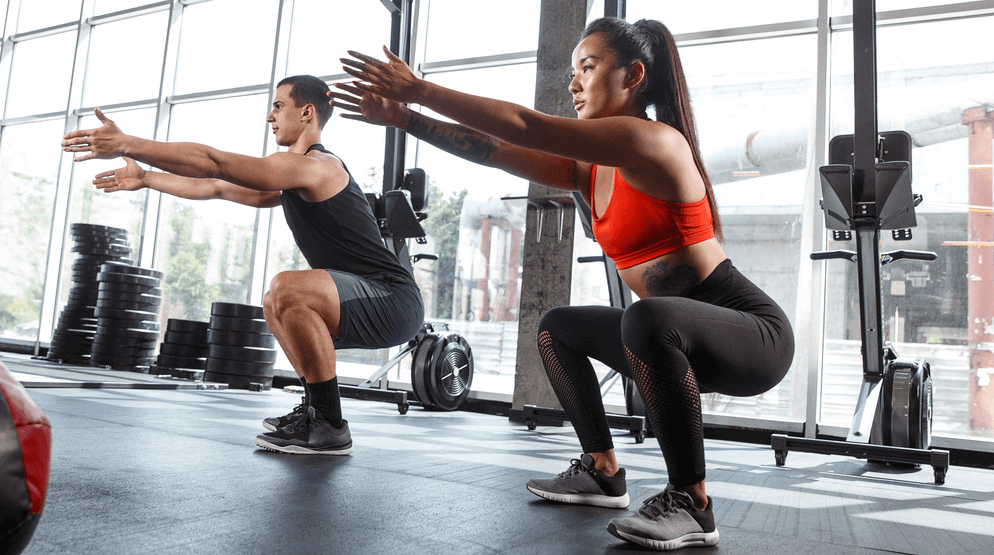
This is one of the most widely debated topics in the fitness industry. There are multiple theories and opinions floating out there.
Some people think that squatting as low as you can is the only way to do it right. Others vehemently oppose this theory with their own that squatting below parallel is a recipe for injury.
The truth lies somewhere in the middle. About 90-degrees for your thighs would be a good place to stop.
Any lower and it gets more difficult to get back up with clean form.
That said, if you can go low without any problems, do it. But if you find that form is sketchy or your back is slouching, stop. Even 90-degrees suffices to get your thighs the resistance it needs.
Benefits of Squats other than toned thighs
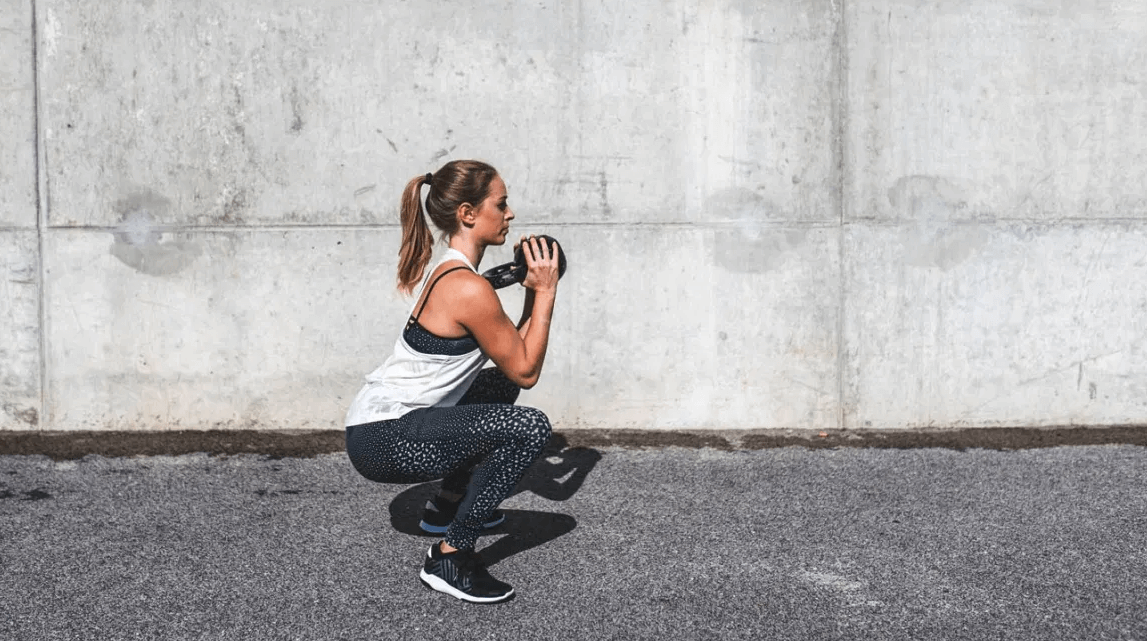
Like we said at the onset, Squats stand for everything good for the lower body. They are crammed to the brim with benefits that go way beyond toned thighs. Here's a look at some of these benefits.
Squats Build Tree-Trunk thick legs
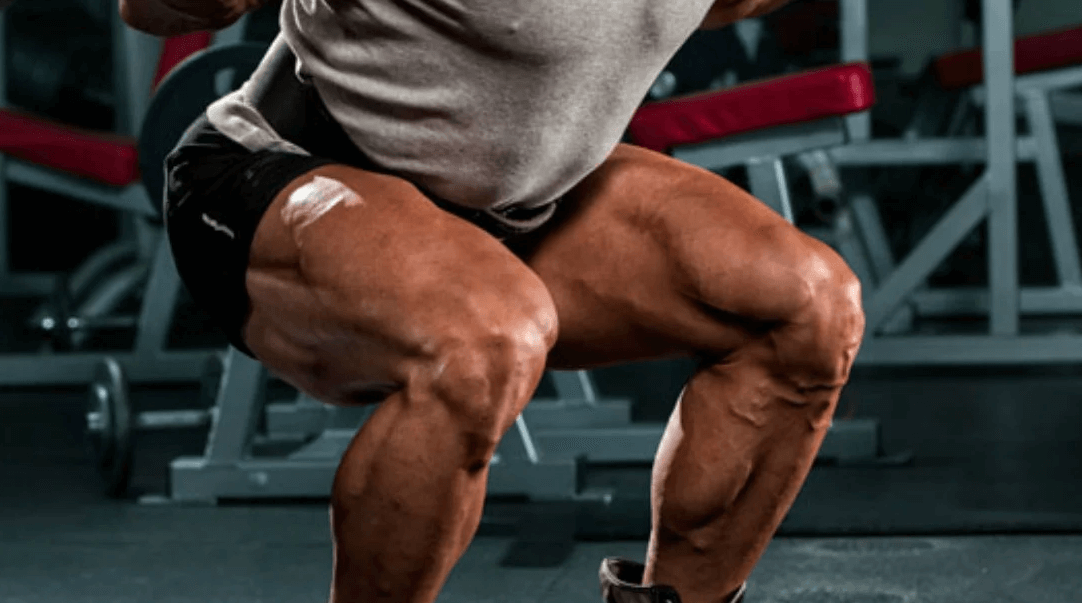
You can be born with chicken legs. But if you die with them, then you are to blame because you most certainly skipped leg day.
Squats are the most fundamental lower body exercise for muscle hypertrophy.
They engage all four muscle groups of the lower body - the glutes, the quads, the calves and the hamstrings.
In fact, there is no better compound exercise if you are looking to target all four of these muscles at the same time.
Squats increase strength
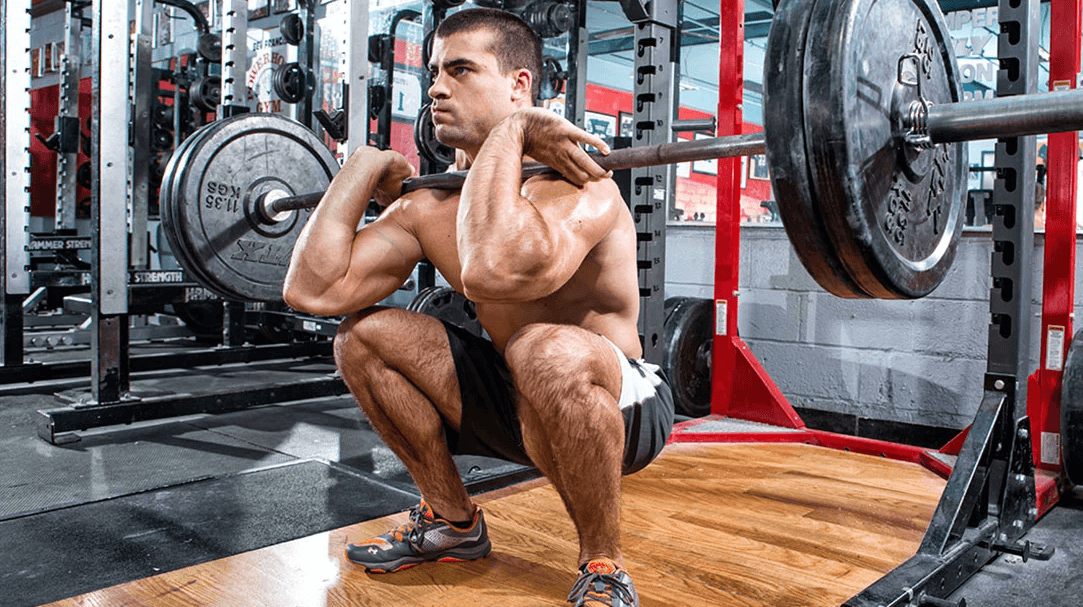
Be it sports or functional movements in everyday life, squats are a shortcut to develop strength and mobility. Especially if you throw in squat variations like the Zercher or back squat, which include the use of weights, you can bet on building strength.
A study conducted in 2012 reveals that performing just one variation of the squat increases the ability of an athlete to produce explosive force and hence, allows them to jump higher.
Develop a strong core

A strong core is such a critical component of overall fitness.
It provides support to the spine and protects it during heavy lifting, sports specific movements and daily activities.
Squats do not really target the core directly but working with resistance on this movement ensures that you are engaging your core muscles as stabilizers throughout. This helps you build stronger abs with squats than any sit-up or crunch.
Mobility
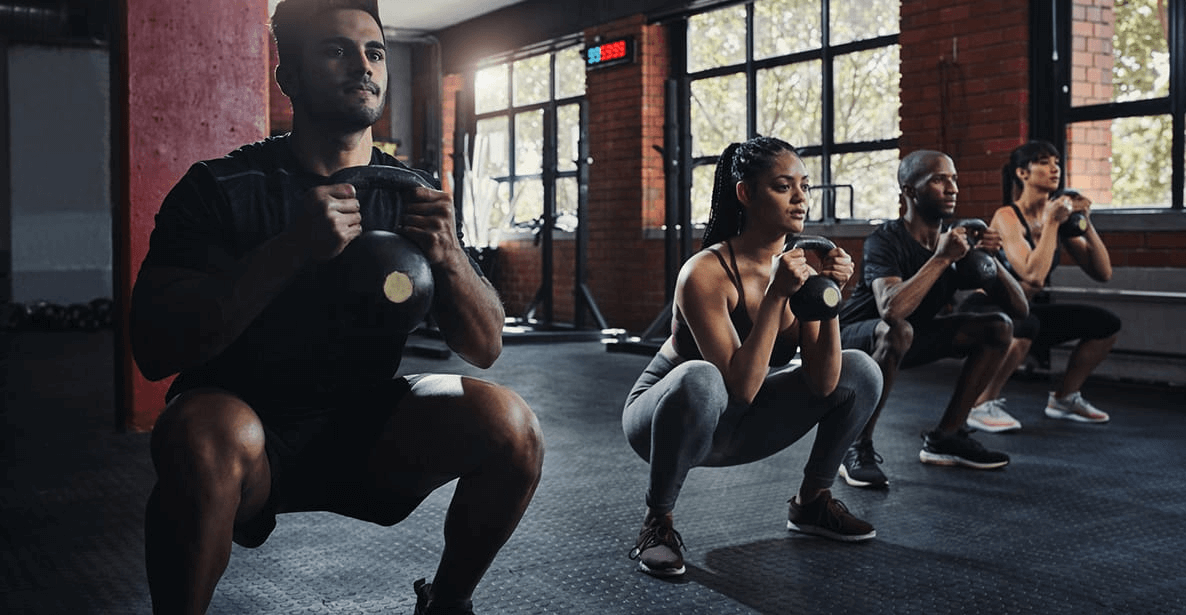
The squat involves movements that we perform normally as part of our daily lives. It is crucial that you have fluid mobility to be able to bend down and pick something off the floor, or sit on the pot.
If you are unable to squat smoothly, it is a sign that your muscles are tight and you need to work on your mobility so you can perform the movement with ease. Subsequently, practicing the squat will increase mobility over time.
Different types of squats

The conventional squat, or the back squat by itself is one of the most challenging exercises. It takes a fair bit of time for a lot of people to learn squatting form and weed out poor posture.
That said, if you are an expert at conventional squats, then there are ample variations within the squats universe to keep you occupied, as well as target specific muscle groups.
There are plenty of squat types you can do; shrimp squats, hack squats, reverse hack squats, smith machine squats and many more.
Here are two of my personal favorites.
Sumo Squat
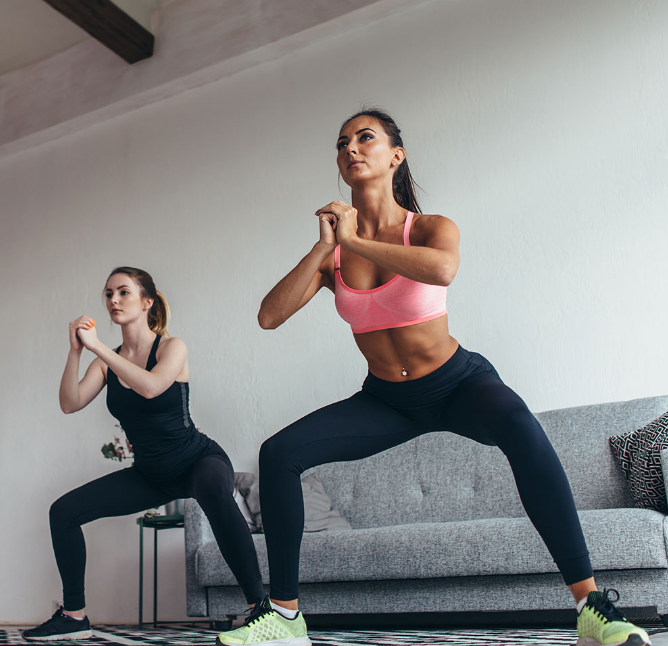
The Sumo Squat is a variation that's not too different from the conventional squat. The only real difference is that when you are in the bottom position of the squat, your feet are wider than shoulder width apart.
Also, if you are using dumbbells for resistance, the weight will be hanging between your legs.
This will put emphasis on the inner thighs and really work your adductors and glutes hard. Keep in mind, however, that this exercise is not for you if you have knee problems or back problems.
How to perform the Sumo Squat
Step 1 - Stand with your feet wider than shoulder width apart and the toes pointing outwards slightly.
Step 2 - Slowly bend your knees and lower your butt until it's about 2-3 inches above the ground. Yeah, you have to go really low with the sumo squat.
Step 3 - If you are using dumbbells, stop before the dumbbells touch the floor. That's the lowest that you can go with dumbbells. You can however, add a barbell on your shoulders for more resistance.
Step 4 - Now push yourself up using your glutes and hamstrings while squeezing them hard through the entire movement.
Step 5 - Repeat for reps.
Bulgarian Split Squat

The Bulgarian split squat is a variation of the regular squat where you balance your body weight on one leg, and let the other rest on top of a chair, and then do your squats.
As you will be working with only one leg, this exercise is great for toning your legs and butt muscles even more than regular squats - and there, ladies, is your little secret for building a nice firm jiggly butt that you can flaunt at the beach.
This also puts a huge emphasis on your core and provides an even greater stimulus to the leg that is resting.
If you are new to squats, then start with bodyweight squats and work up to holding dumbbells or a barbell during this movement.
How to perform the Bulgarian Split Squats
Step 1 - Stand in front of a chair with your feet closer than shoulder width apart.
Step 2 - Lift one leg and place it on top of the chair with your toes facing the chair. The idea is to let the other leg balance the entire body.
Step 3 - Lower yourself to a squat position by bending your non resting leg first and then descending into a full squat with your other leg. At the lowest position, the leg that bears the body weight will be at 90-degrees at the knees, with the thighs parallel to the ground.
Step 4 - As you stand up, push off with your heel and drive through the glutes of your resting leg.
Step 5 - Repeat for reps on each side.
FAQ About Squats
Here are a few common questions about squats answered.
Do squats make your thighs bigger or smaller?
Regular squats do not make your thighs bigger, but it does promote muscle hypertrophy. If you are looking for your thighs to be smaller, then try unilateral leg exercises or drop sets. Or perform bodyweight squats as part of an HIIT routine.
How Many Squats to See Results & Gain muscles?
If you want to gain muscles, it depends on how much weight you lift as well as your nutrition. To gain, you need to eat in a calorie surplus. The more reps and sets you perform will determine the results in terms of hypertrophy (muscle growth) or toning up.
How Many Squats You Should Do for a Bigger Butt?
There is no set number of reps and sets to do for a bigger butt. It's more about the weight you lift and how you mix your workouts, as well as your diet.
Squats can be done in circuits with other exercises that are more glute-centric. Remember, rather than getting hung up over one muscle, and trying to spot grow, aim for stimulating your body as a whole with compound multi-joint exercises that target several muscle groups at once.
After all, if you want to make the most out of squats and activate muscles like the glutes and hamstrings, then we suggest these Sumo Squats and Bulgarian Split Squat variations.
Can squats tone my thighs?
Yes, doing squats in your workout routine is a great way to tone and sculpt thighs. Try using either of these variations if you want to add some spice to your regular squat exercises.
How many squats a day to tone thighs?
Doing squats everyday is not ideal. More is not necessarily better when it comes to exercise. The idea should be to not overdo it and wear yourself out physically. Make sure your muscles get enough rest in between workouts before hitting the gym again for some squats.
However, if you are doing squats every day, then you need to vary up your leg exercises as well as reduce the overall volume. 10-15 reps a set would be a good starting point.
Good luck!
Related Readings:
- Best Cheap Squat Racks, Stands, & Power Racks for Those on A Tight Budget
- Hack Squat Alternative – The 8 Best Substitute Exercises
- Should You Squat and Deadlift on the Same Day?
- Why Do I Bench More Than I Squat? Is This Bad? How To Fix This
- Should I Squat and Bench on the Same Day or Should I Do Them on Separate Days?
Resources:
Ben Mayz
Hi there! I'm Ben, main author and chief editor at Fitlifefanatics.com. I have been obsessed with Strength Training and Fitness for 18 years now.
My passion for living a happy fit lifestyle is what made me realize that fitness is what I wanted for my future.
I went on to earn my Masters in Sports Training & Biomechanics.
My passion for Strength training & fitness and my love of helping others is what made me start Fitlifefanatics.
Here, myself, and a team of specialist aim to provide the most accurate, and actionable information possible in hopes to help foster the fitness community forward.
You can learn more about Fitlifefanatics on our About Page


